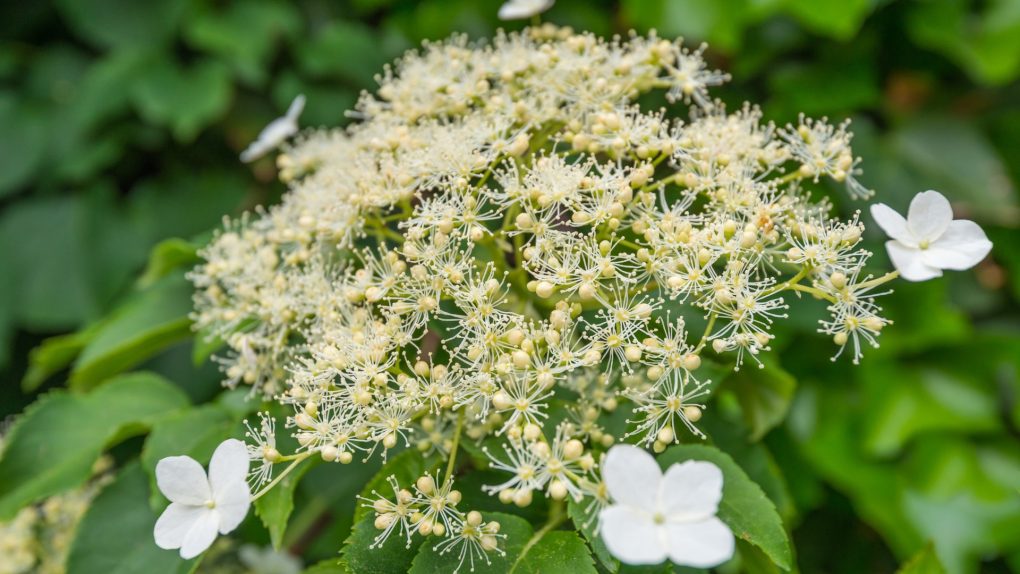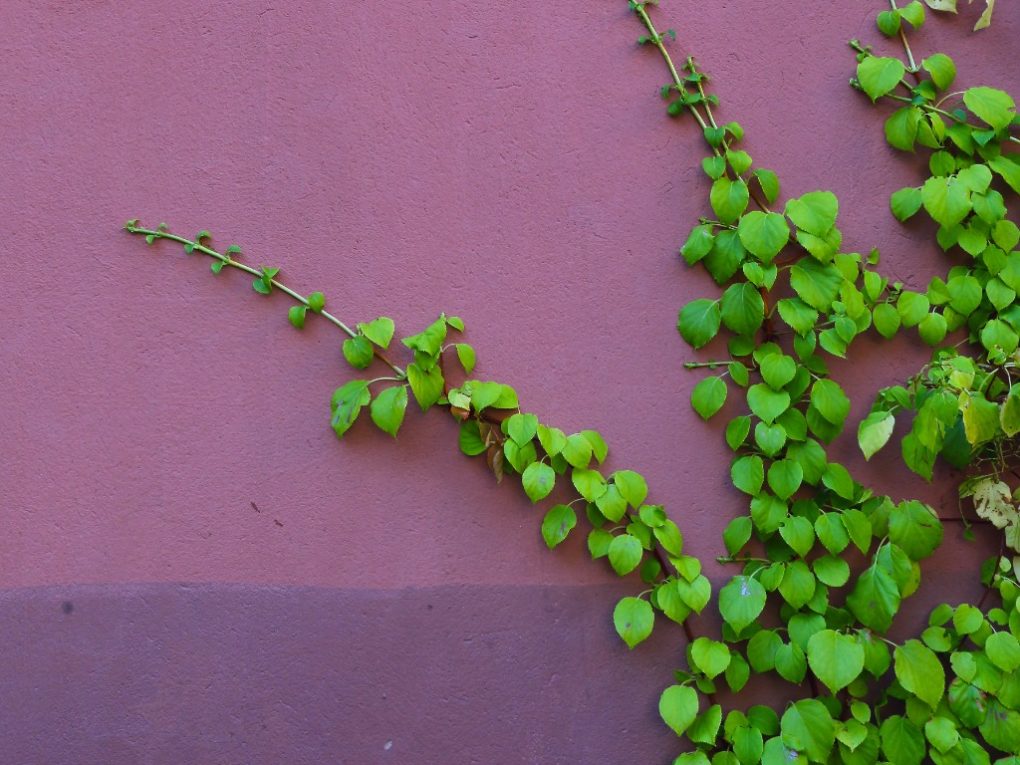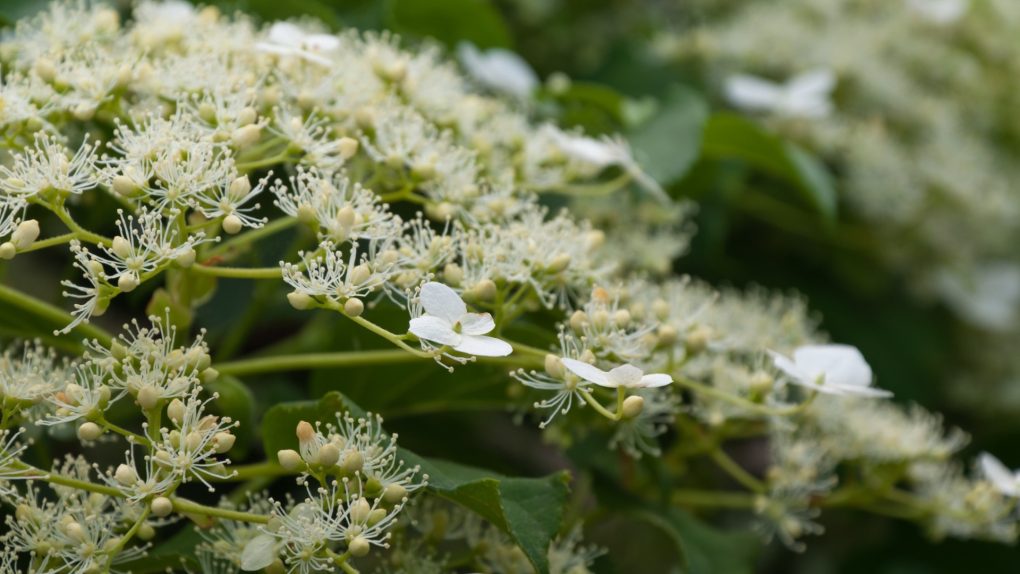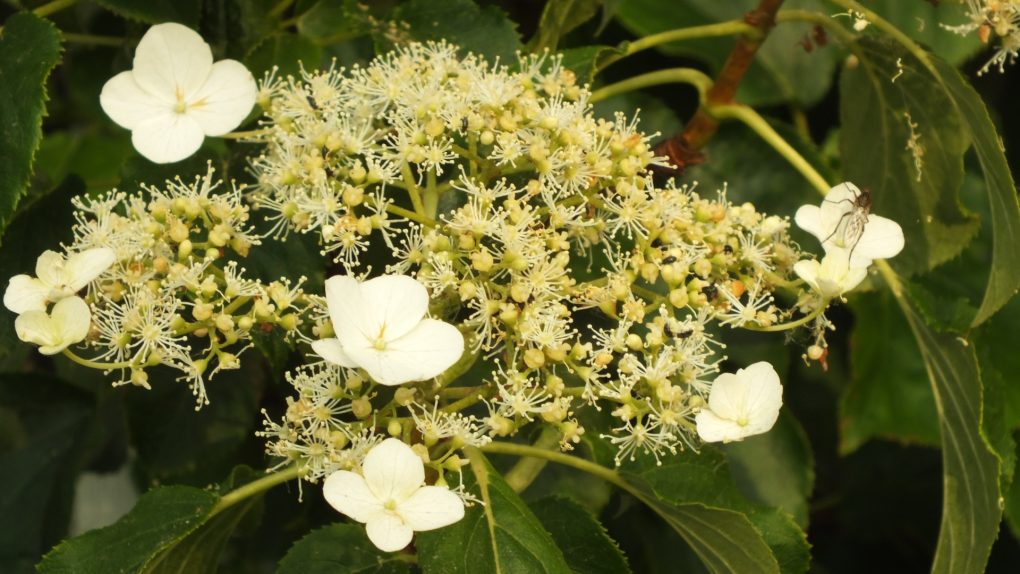Do Climbing Hydrangea Damage Walls? Exploring the Impact of this Popular Plant.
Climbing hydrangeas are a popular choice for gardeners looking to add a touch of greenery to their walls and fences. These vines are known for their beautiful blooms and ability to climb up just about any surface, but many people wonder if these plants can cause damage to the structures they grow on.

Climbing hydrangea (Hydrangea anomala subsp. petiolaris) typically do not damage walls, as they adhere to surfaces using aerial rootlets. These rootlets have small adhesive disks at their tips that grip the surface without penetrating it. This climbing mechanism allows hydrangea to cling to walls without causing structural harm.
However, walls made of weak or unstable materials, or those in poor condition, such as those with crumbling mortar or flaking paint, may experience some damage as the plant’s weight increases over time. Therefore, it is essential to maintain the wall’s integrity and monitor the plant’s growth to prevent any potential issues.
Table of Contents
How Climbing Hydrangea Adheres to Walls
Climbing hydrangea is a fascinating plant with the remarkable ability to cling to walls and other surfaces. This section will explore how climbing hydrangea accomplishes this feat and the mechanisms behind its adhesion.
Adhesion Mechanisms of Climbing Hydrangea
Climbing hydrangea employs a combination of specialized structures and mechanisms to cling to walls securely. Understanding these mechanisms can help us appreciate the plant’s unique adaptation and provide insights for gardeners and enthusiasts.
Aerial Roots
One of the key features of climbing hydrangea is its production of aerial roots. These roots emerge from the stems and branches of the plant, reaching out and seeking support on nearby surfaces. Once in contact with a wall or another structure, the aerial roots develop adhesive pads that enhance their grip.

Adhesive Pads
The adhesive pads on climbing hydrangea’s aerial roots are responsible for its impressive ability to cling to surfaces. These pads secrete a sticky substance called pectin, which helps the plant adhere firmly to walls and other structures. The pectin acts as a natural adhesive, allowing the plant to maintain a strong hold even in challenging conditions.
Twining and Clasping
In addition to aerial roots and adhesive pads, climbing hydrangea employs twining and clasping mechanisms to enhance its grip further. The plant’s stems are flexible and can wrap around supporting structures such as trellises or wire mesh. The plant gains stability by twining around these supports and secures its position against the wall.
Benefits of Climbing Hydrangea’s Adhesion
The ability of climbing hydrangea to cling to walls offers several advantages, making it a popular choice for decorative and functional purposes. Here are some of the benefits associated with the plant’s adhesion:
● Vertical Gardening: Climbing hydrangea allows gardeners to create vertical gardens, transforming plain walls into lush green spaces.
● Erosion Control: When planted on slopes or hillsides, climbing hydrangea’s adhesion helps prevent soil erosion by anchoring the plant to the ground.
● Insulation and Cooling: The dense foliage of climbing hydrangea provides natural insulation for walls, helping to regulate temperature and reduce energy consumption.
● Aesthetic Appeal: With its beautiful blooms and attractive foliage, climbing hydrangea adds a touch of elegance to any wall or vertical surface.
Factors Affecting Climbing Hydrangea Damage to Walls
Climbing hydrangeas (Hydrangea petiolaris) are beautiful vines that add elegance to walls and fences. However, it is essential to understand the factors that can impact the damage these plants may cause to the structures they grow on. By being aware of these factors, you can take proactive measures to prevent or minimize potential harm. Here are the key considerations:

1. Adhesive Roots
Climbing hydrangeas possess adhesive roots that enable them to cling onto surfaces. While this characteristic allows the vine to climb walls effectively, it can also result in damage. The adhesive roots can penetrate cracks or crevices in the surface and grow, potentially causing structural weaknesses or dislodging loose materials.
2. Growth Rate
The rate at which climbing hydrangeas grow can influence the extent of damage they cause to walls. These vines are known for their vigorous growth; their stems can become quite thick over time. As the plant expands, it can exert pressure on the wall’s surface, leading to cracks, crumbling, or even the displacement of bricks or stones.
3. Moisture Retention
Climbing hydrangeas prefer moist environments and tend to retain water on their leaves and stems. This moisture can harm walls, particularly if the surface is not adequately waterproofed or protected. Continuous exposure to dampness can result in the growth of mold, mildew, or algae, which can damage the wall’s appearance and integrity.
4. Sun Exposure
The amount of sunlight the climbing hydrangea receives can impact its growth and, consequently, the damage it may cause to walls. The vine may exhibit slower growth and produce fewer tendrils when planted in shaded areas. In contrast, when exposed to direct sunlight, the plant tends to thrive and can spread more rapidly, potentially leading to increased stress on the wall surface.
5. Maintenance Practices
Regular maintenance and pruning of climbing hydrangeas are crucial in managing potential damage to walls. Trimming the vine and removing any dead or diseased branches can prevent excessive weight and reduce the risk of structural strain. Proper training and support systems, such as trellises or wires, can also help guide the vine’s growth and prevent it from putting excessive pressure on the wall.

Preventing Damage to Walls Caused by Climbing Hydrangeas
Climbing hydrangeas can add beauty and charm to any outdoor space. However, without proper care and attention, these plants can cause damage to walls. In this section, we will provide you with some valuable tips on how to prevent climbing hydrangeas from damaging your walls.
1. Choose the Right Supporting Structure
When planting climbing hydrangeas near walls, selecting the appropriate supporting structure is crucial. Here are some factors to consider:
● Sturdy Trellis or Lattice: Install a sturdy trellis or lattice against the wall, ensuring it is capable of withstanding the weight and growth of the hydrangea.
● Secure Anchoring: Ensure the supporting structure is firmly anchored to the wall to prevent accidental detachment.
2. Regular Pruning and Training
Regular pruning and training are essential to keep climbing hydrangeas in check and prevent them from growing uncontrollably. Follow these guidelines:
● Remove Excess Growth: Trim any excess growth that may come into contact with the wall. This will help maintain a safe distance between the plant and the surface.
● Direct Growth Away from Walls: Guide the branches and tendrils away from the wall, encouraging them to grow towards the supporting structure instead.
3. Protective Barrier Installation
Creating a protective barrier between the climbing hydrangea and the wall can be an effective preventive measure. Consider the following options:
● Wire Mesh or Netting: Attach a wire mesh or netting to the wall, acting as a barrier that prevents direct contact between the hydrangea and the surface.
● Protective Sleeve or Mat: Wrap the plant base with a protective sleeve or mat made of rubber or foam. This adds an extra layer of insulation and cushioning.
4. Regular Inspection and Maintenance
Maintaining a vigilant eye on the growth of climbing hydrangeas is essential. Regularly inspect and perform necessary maintenance tasks:
● Check for Attachment Points: Ensure the hydrangea is securely attached to the supporting structure and there are no loose branches or tendrils.
● Remove Debris: Clear any fallen leaves or debris from the plant, as they can retain moisture and potentially cause damage to the wall.
Conclusion
By following these preventive measures, you can enjoy the beauty of climbing hydrangeas while safeguarding your walls from potential damage. Remember to choose a suitable supporting structure, prune and train the plant regularly, install protective barriers if necessary, and perform regular inspections and maintenance. With these precautions, your climbing hydrangeas will thrive while keeping your walls safe and sound.
